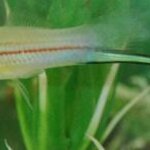Ecology & Zoology

My mouse farm!
Today,after endless finessing, I finally got word that I will be getting my own mice. My own lab mice. To observe. At home.
That's a big deal in itself. It is easy to get pet mice--but I didn't want that. I wanted the kind of mice Clarence Little observed and bred in the 1920s--the c57black strain that now dominates lab science world wide. And that wasn't easy. My studio is not, among other things, "a certified and accredited lab and murine facility," as one source explained to me, and so I could not have one. I tried to explain that, according to my wife, it is a…

Something about normal, run-of-the-mill plants limits their reach upward. There's been no way to create that magical beanstalk in the fairy tales but no one knows why. For more than a century, scientists have tried to find out which part of the plant both drives and curbs growth: is it a shoot's outer waxy layer? Its inner layer studded with chloroplasts? Or the vascular system that moves nutrients and water? The answer could have great implications for modern agriculture, which desires a modern magical bean or two.
Now, in the March 8 issue of the journal Nature, researchers in the Plant…

The fact that female wasp spiders have numerous sexual contacts is something which their male partners cannot prevent. What they can do, however, is ensure that no offspring ensue from these tête à têtes with their rivals: the male spiders simply place a chastity belt on their partner while copulating. The tip of their genital breaks off during intercourse, blocking the sexual orifice of the lady spider. Biologists from the universities of Bonn and Hamburg report on this amazing mechanism in the journal ‘Behavioral Ecology’ (vol. 18, pages 174-181, 2007).
When a male wasp spider discovers a…

A new genus of millipede was recently discovered by a Northern Arizona University doctoral student and a Bureau of Land Management researcher.
J. Judson Wynne, with the Department of Biological Sciences at NAU and cave research scientist with the U.S. Geological Survey's Southwest Biological Center, and Kyle Voyles, Arizona State Cave Coordinator for the Bureau of Land Management (BLM), collected specimens leading to the discovery of two new millipede species in caves on opposite sides of the Grand Canyon.
Wynne and Voyles, known for their cave research, also discovered a new genus of…

A new study suggests that the iron-rich winter runoff from Pacific Northwest streams and rivers, combined with the wide continental shelf, form a potent mechanism for fertilizing the nearshore Pacific Ocean, leading to robust phytoplankton production and fisheries.
The study, by three Oregon State University oceanographers, was just published by the American Geophysical Union in its journal, Geophysical Research Letters.
West coast scientists have observed that ocean chlorophyll levels, phytoplankton production and fish populations generally increase in the Pacific Ocean the farther north…

The sugar-containing nectar secreted by plants and consumed by pollinators shares a number of similarities to fitness drinks, including ingredients such as amino acids and vitamins. In addition to these components, nectar can also contain secondary metabolites such as the alkaloid nicotine and other toxic compounds. Scientists Danny Kessler and Ian Baldwin from the Max Planck Institute for Chemical Ecology in Jena, Germany, recently addressed the question, why would plants risk poisoning the insects and birds that provide pollination services? Their findings have been published in The Plant…

How does life survive in the black depths of the ocean? At the surface, sunlight allows green plants to "fix" carbon from the air to build their bodies. Around hydrothermal vents deep in the ocean live communities of giant clams with no gut and no functional digestive system, depending on symbiotic bacteria to use energy locked up in hydrogen sulfide to replace sunlight. Now, the genome of this symbiont has been completely sequenced and published in Science.
"The difference here is that while plants get their energy and carbon via photosynthesis by chloroplast symbionts, this clam gets its…
North American marine turtles are at risk if global warming occurs at predicted levels, according to scientists from the University of Exeter. An increase in temperatures of just one degree Celsius could completely eliminate the birth of male turtles from some beaches. A rise of three degrees Celsius would lead to extreme levels of infant mortality and declines in nesting beaches across the USA.
Marine turtle. Credit: Copyright Lucy Hawkes, MTRG
Research published this week in the journal Global Change Biology analyses 26 years of loggerhead turtle nesting and climate data and compares the…

At least to female swordfish.
Scientists from the Universities of Exeter and Glasgow today reveal how some females become sexually mature more quickly if they see attractive males.
The researchers studied a captive population of green swordtail fish, a species native to Central America and popular in tropical aquariums. The green swordtail is named after the striking sword-like growth, which males develop on their tail-fin, so they appear larger and more attractive to females.
Male green swordtail fish. Credit: Copyright Craig Walling, University of Exeter
The females in the group that…

At a 9 am press conference at the American Association for the Advancement of Science Annual Meeting (AAAS) on February 18th, an international team of leading fisheries economists, biologists, and ecologists will call for the abolition of government fuel subsidies that keep deep-sea fishing vessels moving to deeper waters.
"Industrial fisheries are now going thousands of miles, thousands of feet deep and catching things that live hundreds of years in the process - in the least protected place on Earth," says Elliott Norse of the Marine Conservation Biology Institute.
In international…